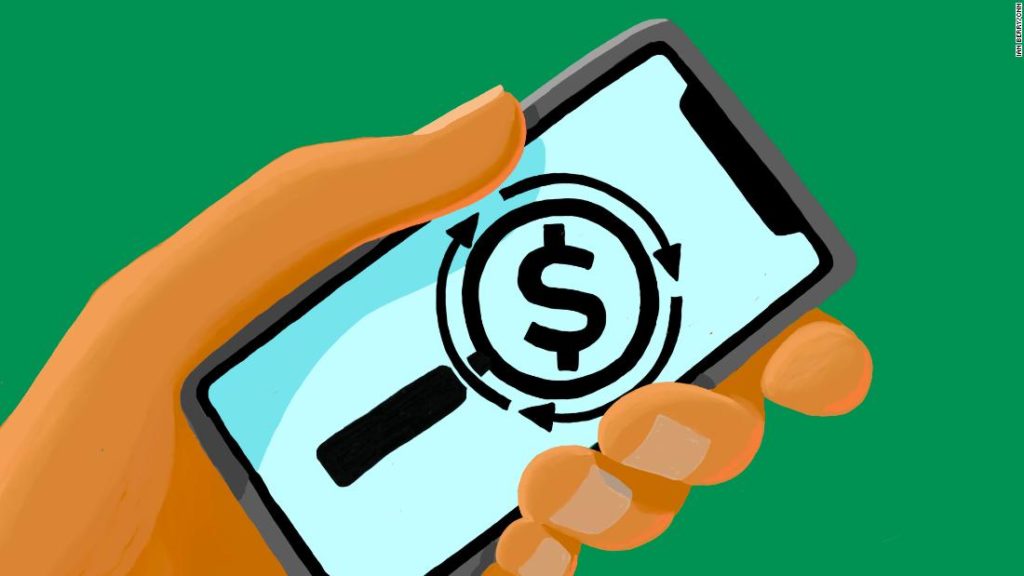
That means making a budget. No one loves hearing the dreaded ‘B’ word, but keeping a running tab of your daily expenses in your head probably isn’t cutting it.
“People think they are spending less than they actually are,” said Madison Sharick, manager of financial planning at PNC Investments.
Taking an ad hoc approach to budgeting can leave you in the hole at the end of the month, shortchanging your savings and pushing you into debt.
But don’t think of a budget as a burden, recommended Tiffany Aliche, founder of personal finance website The Budgetnista and author of upcoming book “Get Good with Money.” Instead, think of it as a way to achieve your financial goals. “Your budget creates an environment to have the things you want in a way that is sustainable,” she said.
And creating a system to track your expenses doesn’t have to feel like a chore. Just find a method that works best for you.
If you want to do the heavy lifting
Whether it’s with pen and paper or an Excel spreadsheet, tracking all your spending and incoming cash for at least a month provides a detailed log of your financial habits and makes you more aware of them.
The key is to be honest and thorough with your tracking — yes, that cup of coffee needs to be noted. As does that birthday card for your mom. At the end of the month, you will have a line-by-line accounting of your finances giving you a clear picture of how much you are spending and saving.
To help categorize spending, Aliche places a “B” next to any bills that are fixed like rent or mortgage payments, and a “UB” for “usage bills” is placed on expenses that can fluctuate, like utility bills. She places a “C” next to expenditures that are a choice (and are the easiest to cut back on, like eating out or entertainment).
The downside: This method can be time-consuming and can feel tedious.
If you swipe all the time
If pen and paper aren’t your thing, or you’re just not diligent enough to keep up with all your purchases by hand, technology can help track and categorize your spending for you.
Various apps and websites like Mint or PocketGuard will sync with your accounts to create spending reports. These tools work best if almost all of your spending is done through credit cards and electronic purchases.
Some credit card providers also offer breakdowns of your spending to give you a sense of where your money is going, but they’re usually limited to transactions you made with that account.
The downside: Tracking software tends to be backward-looking, tracking what you’ve already spent, which won’t help prevent overspending.
You like to have rules to follow
Am I saving enough? Where can I cut back?
Now that you know where you’ve been putting your money, maybe you need some help figuring out where it should be going.
The 50/30/20 budget provides a guideline on how to divide your paycheck: 50% should go to required costs (for example: housing, groceries, utility bills) 30% to discretionary spending (travel, entertainment, subscriptions, etc.) and 20% to savings and debt.
The downside: This method can be hard to follow for people in high cost-of-living areas — where housing costs eat up a much larger portion of a budget — or for those nearing retirement who may need to double down on savings.
If you’re an extreme money manager… or aspire to be
Once you’ve paid all your bills, spent on your wants and put cash toward savings, you might still have some left over. Money left floating around in your checking account without a designated purpose often ends up being spent on luxuries and impulse buys.
That’s not great.
A zero-sum budget helps avoid that problem by accounting for every dollar before you earn it. So you start with your income and then subtract all your expenses for the month with the goal of hitting zero. Expenses include everything you spend money on, including housing, food, savings and investments.
A popular zero-sum system is YNAB (You Need a Budget). The software will allocate your income to cover all your expenses, set goals and track your progress. EveryDollar from personal finance expert Dave Ramsey is another tool that uses the zero-sum method to allocate funds.
The downside: This approach can be time-consuming and hard to follow if your income frequently fluctuates.
If you need strict discipline
Having a visual reminder of where your money is going can help rein in overspending.
First, figure out your take-home pay for a month (or pay period) and then subtract any expenses that can’t be paid in cash: things like, housing, savings and utilities (automate these payments if possible).
The leftover funds are what you have left to spend on everything else in your budget. Determine how much you can spend in each category (groceries, gas, entertainment) and then put cash for each designated amount into an envelope labeled with what it can be spent on.
Once the envelope is empty, no more spending in that category for the month.
If you don’t want to deal with physical envelopes full of cash, apps like Goodbudget and Mvelopes allow you to create virtual envelopes to help track spending.
The downside: This old-school method requires a lot of cash and trips to the ATM and can be hard for families to execute together.
You may also like
-
Afghanistan: Civilian casualties hit record high amid US withdrawal, UN says
-
How Taiwan is trying to defend against a cyber ‘World War III’
-
Pandemic travel news this week: Quarantine escapes and airplane disguises
-
Why would anyone trust Brexit Britain again?
-
Black fungus: A second crisis is killing survivors of India’s worst Covid wave

